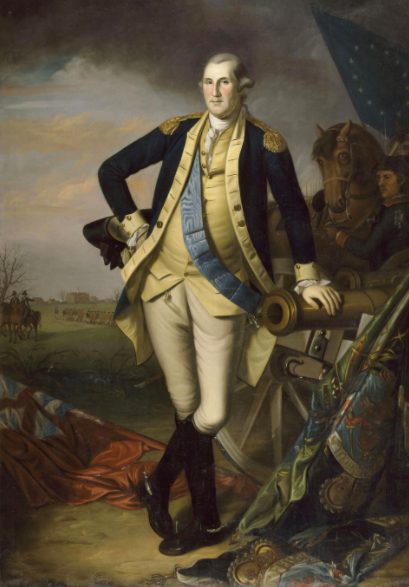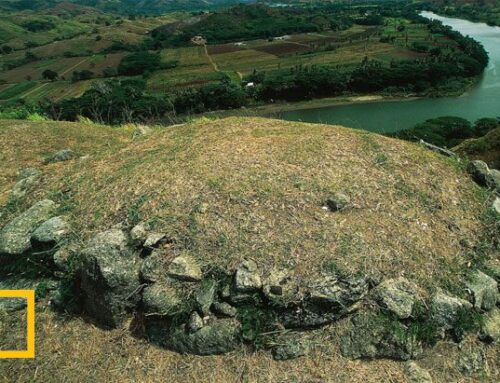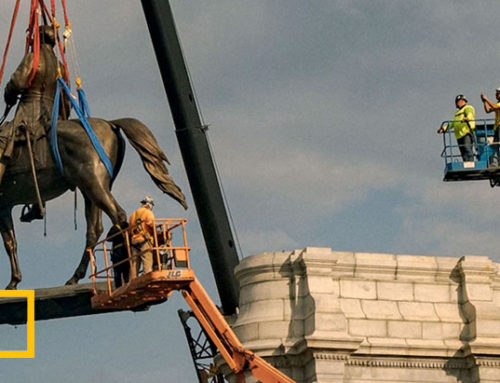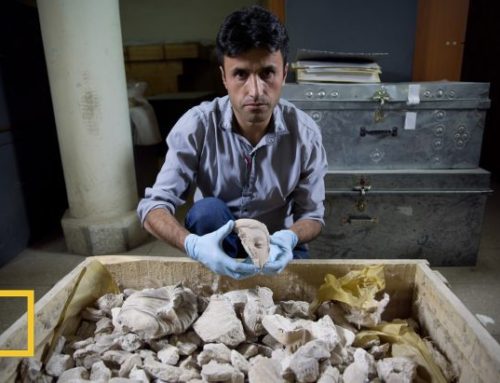George Washington confronted a smallpox epidemic with a belief in science—and a controversial plan.

George Washington strikes a confident pose after the victorious Battle of Princeton in this iconic portrait by Charles Willson Peale.
WHEN AMERICAN COLONISTS launched their revolution against Britain, they quickly encountered a second but invisible enemy that threatened to wipe out the new Continental Army: highly contagious smallpox.
But luckily for the young nation, the army’s commander was familiar with this formidable foe. George Washington’s embrace of science-based medical treatments—despite stiff opposition from the Continental Congress—prevented a potentially disastrous defeat, and made him the country’s first public health advocate.
A hard lesson
Washington’s wisdom came from personal experience with the horrors of an epidemic. “Was strongly attacked by the small Pox,” Washington wrote as a teenager in 1751, while visiting the Caribbean island of Barbados. At the time, the disease caused by the variola virus killed as many as one in two victims. Washington was lucky. After nearly a month of chills, fever, and painful pustules, he emerged with the pockmarked face typical of survivors—but alive, and with immunity to the illness.
“[I will] continue the utmost Vigilance against this most dangerous enemy.” —George Washington
Washington’s encounter with the virus proved fortunate for the new nation. In 1775, smallpox arrived in Boston, carried by troops sent from Britain, Canada, and Germany to stamp out the growing rebellion. Many of these soldiers had been exposed and were therefore immune, but the vast majority of American colonists were not.
In the aftermath of the battles of Lexington and Concord, Washington’s Continental Army had set up camp across the Charles River from the stricken city. To the dismay of many patriots seeking refuge from the British, the general prohibited anyone from Boston from entering the military zone. “Every precaution must be used to prevent its spreading,” he sternly warned one of his subordinates about the virus. To John Hancock, the president of the Continental Congress, Washington vowed to “continue the utmost Vigilance against this most dangerous enemy.”
By immediately isolating anyone suspected of infection and limiting outside contact, Washington “prevented a disastrous epidemic among the Continental troops,” historian Ann Becker says. In March 1776, when the British withdrew from Boston, Washington even specified that only soldiers who had suffered from smallpox be allowed into the city and its surroundings.
Fighting back
But Washington wanted to do more than contain the threat. Inoculation against smallpox dates back to ancient China, but in colonial America it was a highly controversial procedure. Called variolation, the procedure entailed making a small incision in a patient’s arm and inserting a dose of the live virus large enough to trigger immunity but small enough to prevent severe illness or death. The son of Britain’s King George III had died in agony when his dose was poorly applied. In Washington’s home state of Virginia, variolation was illegal.
Washington, however, was a strong believer in its effectiveness; he even persuaded his wife, Martha, to undergo the procedure in May 1776. That month, however, the general forbade any of his troops from being inoculated. It could take weeks to recover, and he feared that the inoculated men would be laid low just as the fight with the British intensified. “The Enemy, knowing it, will certainly take Advantage of our Situation,” he wrote.
He also had to contend with states and localities that strictly controlled or outlawed the procedure. In the midst of the epidemic, the Continental Congress ordered Army surgeons not to perform variolations. Washington was temporarily hamstrung, but he nevertheless ordered all new recruits inoculated, figuring their immunity would kick in by the time they were battle ready.
By then, it was too late for thousands of American troops who marched on Quebec. Their commanding officer, Major General John Thomas, failed to follow Washington’s strict protocols during the ill-fated expedition, and he and one-third to half of his 10,000 soldiers perished from the virus. The force was soundly defeated. “The smallpox is ten times more terrible than Britons, Canadians, and Indians together,” Massachusetts statesman John Adams despairingly wrote in 1776.
As the epidemic spread, Washington decided to act. The following February, he informed Hancock that “I find it impossible to keep it from spreading thro’ the whole Army in the natural way.” He ordered all troops inoculated, noting to his leading medical officer that “necessity not only authorizes but seems to require the measure.” By the end of 1777, some 40,000 soldiers had been vaccinated.
Historians say the general’s bold move proved critical to the revolution’s success. “A compelling case can be made that his swift response to the smallpox epidemic and to a policy of inoculation was the most important strategic decision of his military career,” historian Joseph Ellis says.
When infection rates dropped from about 20 percent to 1 percent as a result of Washington’s order, even the skeptical Continental Congress was convinced. The lawmakers repealed bans on variolation across the colonies, the first major piece of American public health legislation. And, of course, after winning the war against smallpox, the United States went on to win its fight against Britain and solidify its standing as a new nation.




